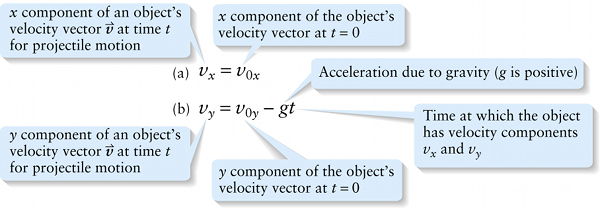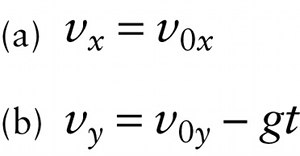Velocity, acceleration, and time for projectile motion (3-12)
Question 1 of 6
Question
Time at which the object has velocity components vx and vy
{"title":"x component of an object's velocity vector v at time t for projectile motion","description":"Wrong","type":"incorrect","color":"#99CCFF","code":"[{\"shape\":\"rect\",\"coords\":\"85,33,112,58\"},{\"shape\":\"poly\",\"coords\":\"82,133\"}]"} {"title":"x component of the object's velocity vector at t = 0","description":"Incorrect","type":"incorrect","color":"#ffcc00","code":"[{\"shape\":\"rect\",\"coords\":\"118,11,119,13\"},{\"shape\":\"rect\",\"coords\":\"153,18,179,44\"}]"} {"title":"acceleration due to gravity (g is positive)","description":"Incorrect","type":"incorrect","color":"#333300","code":"[{\"shape\":\"poly\",\"coords\":\"113,132\"},{\"shape\":\"rect\",\"coords\":\"255,103,284,144\"}]"} {"title":"Time at which the object has velocity components v sub x and v sub y","description":"Correct!","type":"correct","color":"#000080","code":"[{\"shape\":\"rect\",\"coords\":\"281,98,301,139\"}]"} {"title":"y component of the object's velocity vector at t = 0","description":"Incorrect","type":"incorrect","color":"#FF6600","code":"[{\"shape\":\"rect\",\"coords\":\"153,110,181,140\"}]"} {"title":"y component of an object's velocity vector v at time t for projectile motion","description":"Incorrect","type":"incorrect","color":"#800000","code":"[{\"shape\":\"rect\",\"coords\":\"87,123,107,154\"}]"}Review
This equation tells us \textit{that in projectile motion, the horizontal component of velocity doesn’t change.} The acceleration due to gravity affects only the vertical component of velocity, so nothing acts to change the horizontal velocity. The vertical component of velocity \textit{does} change with time, however; as Equation 3-12b shows, the y component of velocity decreases at a steady rate.

